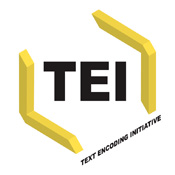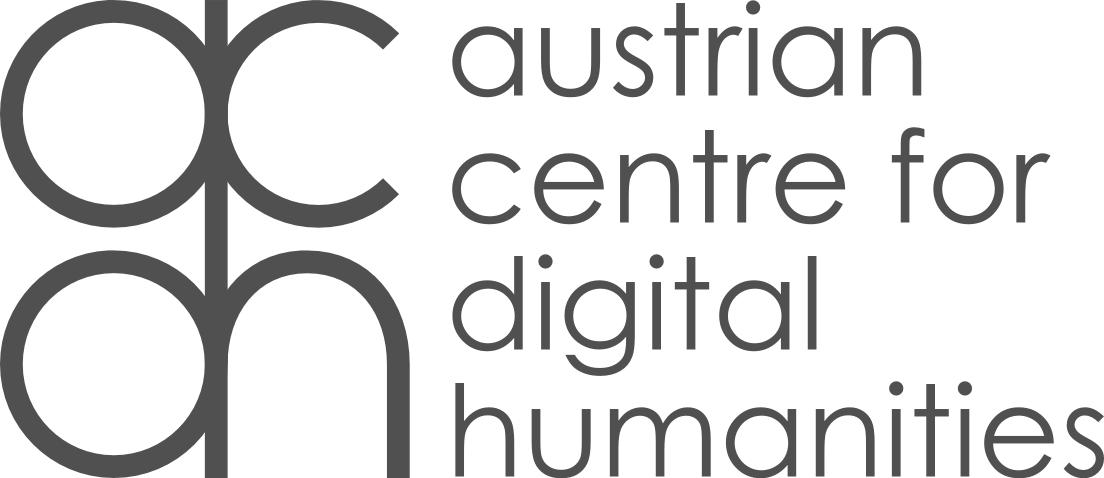This workshop can be seen as a follow up to the TEI 2015 Lyon panel on “Shared Platforms for TEI Community: TextGrid, TAPAS, DARIAH” which discussed various TEI based repositories, common user requirements and research scenarios, and their technological frameworks.
The workshop will explore two infrastructures, TextGrid and DARIAH-DE, at work, focusing on modeling a “prototype” digital edition starting with a plain text, finishing with a TEI-based online publication.
outline
Digital editions are one of the core applications of TEI. However, when it comes to not only generate, but publish enriched data in a standardised, interoperable way, researchers find themselves confronted with a variety of both scholarly and technological decisions and requirements. TextGrid and DARIAH-DE support researchers during the entire process of generating, archiving, and presenting their TEI data in an interoperable environment.
TextGrid is a virtual research environment for the Humanities funded by the German Ministry for Education and Research (BMBF). It enables the collaboration of researchers at different places as well as archiving and publication of research data in an XML-based repository, following international standards. Core components are the TextGrid Repository, an XML-based long-term research data archive, and the TextGrid Laboratory, an adaptable software bundle for collaborative digital scholarly editing based on XML/TEI. TextGrid is part of the digital research infrastructure DARIAH-DE, equally funded by the BMBF to provide a sustainable digital infrastructure for humanistic research. Users benefit from both portfolios with one single login.
On the basis of text extracts from Jules Verne's "Around the World in 80 Days", participants will transcribe, mark-up, annotate and geo-refer TEI data with the help of TextGridLab and the DARIAH-DE Geo-Browser. The encoded data will then be published via the TextGrid and DARIAH-DE repository and into a web platform (online edition) through SADE (Scalable Architecture for Digital Editions).
Workshop participants will explore the diversity of the digital research environment TextGrid as well as tools and services of the research infrastructure DARIAH-DE and its possibilities for digital analysis. An introduction on both infrastructures, illustrated by examples from various user scenarios, will be followed by a hands-on session focusing on editing and modelling TEI data, particularly of digital editions, to their publication and exploration. Following these steps, participants will be able to explore the different tools and services to generate, model and publish XML/TEI data guided by TextGrid and DARIAH staff members in small groups according to their own interests and needs. The aim is to create a small digital edition starting with a facsimile and a transcription, enriching data with extended mark-up such as geospatial encoding, and publishing into both the TextGrid Repository and a SADE instance (web portal).
step 1 – Users and roles
- The Project and User Management to administrate folders, files and access rights.
step 2 – Editing
- An XML Editor allows working with XML files by offering the user a tree-, source-code, WYSIWYM and web preview. A Unicode Character Table allows easy searching, copying and inserting of any symbol in the Unicode character set. Alternatively, oXygen XML Editor can be embedded.
- A customisable Metadata Editor for creating and administrating metadata of TextGrid objects that can be used for project-overlapping queries.
- The Text Image Link Editor supports the XML Editor in linking text and image segments as well as serving as an image annotator. An output file links text elements with the topographical position of a rectangular or polygonal image segment as SVG, as needed for linking facsimiles and transcriptions in digital editions.
- The image viewer and referencing tool DigiLib covers a gallery view of several images, zoom, scaling, marking and referencing functions.
step 3 – Publishing
- Publishing into the TextGrid Repository: A digital long-term archive for humanistic research data to guarantee long-range availability and accessibility together with extensive search facilities, different download formats, and tools for further exploration and visualisation.
- The software SADE – Scalable Architecture for Digital Editions supports the publication of TEI data in the TextGridLab into web portals.
step 4 – Exploring published editions in the repository
- Browsing and exploring published editions within TextGridRep and SADE, including persistent identifiers for referencing each object.
- Visualisation of spatio-temporal information via the DARIAH-DE Geo-Browser.
- Tools for both text and image annotation, creating interoperable and referenceable data.
- Visualisation of quantitative text analyses with DigiVoy
- (Multilingual) exercise texts will be provided; however, participants can use own open-licenced, short texts preferable containing spatio-temporal aspects (events, persons, dates). Please contact us beforehand.
Using TextGridLab requires registration and download of the software, preferably beforehand. Number of participants is limited to 25.
References
- DARIAH-DE – https://de.dariah.eu/dariah-de-english
- TextGrid – https://textgrid.de/en/
- TextGrid Registration – https://textgrid.de/registrierung/download
- TextGrid Lab (Download) – https://textgrid.de/download
- TextGrid Rep – https://textgridrep.org
- TextGrid Online Documentation and Wiki: https://wiki.de.dariah.eu/display/TextGrid/Main+Page (en.)
- DARIAH-DE Geo-Browser and Datasheet Editor: http://geobrowser.de.dariah.eu
- DigiVoy: https://de.dariah.eu/digivoy
- SADE – http://sade.textgrid.de/exist/apps/SADE/textgrid/index.html
- Blümm, Mirjam; Funk, Stefan E.; Söring, Sibylle: Die Infrastruktur-Angebote von DARIAH-DE und TextGrid. In: Information. Wissenschaft & Praxis 2015; 66(5–6): p. 304–312. URL: http://dx.doi.org/10.1515/iwp-2015-0055
- Hedges, M.; Neuroth, H; Smith, K. M.; Blanke,T; Romary, L; Küster, M.; Illingworth; M.: TextGrid, TEXTvre, and DARIAH: Sustainability of Infrastructures for Textual Scholarship. In: Journal of the Text Encoding Initiative (Online), Issue 5 (2013). URL: https://textgrid.de/fileadmin/publikationen/TextGrid__TEXTvre__and_DARIAH_-_Sustainability_of_Infrastructures_for_Textual_Scholarship_Hedges__Neuroth__Smith__Blanke__Romary__K%C3%BCster__Illingworth_2013.pdf
- Kollatz, Thomas: Raum-Zeit-Analysen mit Geo-Browser und Datasheet-EditorRaum-Zeit-Analysen mit Geo-Browser und Datasheet-Editor, In: Bibliothek - Forschung und Praxis 2016; 40(2): 1-6, Sonderheft DARIAH-DE, eds. Neuroth, Heike et al., p. 229-233.
- Neuroth, Heike; Rapp, Andrea; Söring, Sibylle (Hrsg.): TextGrid: Von der Community für die Community – Eine Virtuelle Forschungsumgebung für die Geisteswissenschaften. 2015, URL: http://www.univerlag.uni-goettingen.de/handle/3/Neuroth_TextGrid
- Söring, Sibylle: Technische und infrastrukturelle Lösungen für digitale Editionen: DARIAH-DE und TextGrid. In: Bibliothek - Forschung und Praxis 2016; 40(2): 1-6, Sonderheft DARIAH-DE, eds. Neuroth, Heike et al., p. 207-212.
List of workshop leaders
Stefan E. Funk, Göttingen State and University Library, works as a software architect and developer within TextGrid and DARIAH-DE and various national and international humanistic research projects. Research interests: Research data management and sustainability, repository technologies.
Thomas Kollatz is research assistant at the Salomon Ludwig Steinheim-Institut for German-Jewish History, Essen. With a degree in Religious Studies and Semitic Languages he was/is involved in TextGrid and DARIAH and other eHumanities project in the field of Digital Epigraphy. He is also responsible for “epidat,” the epigraphical database of Jewish sepulchral inscriptions. His research Interests are Digital Humanities, Digital Epigraphy, German literature in Hebrew letters around 1800 as well as Jewish-German press.
Oliver Schmid, Technische Universität Darmstadt. With a degree in business informatics and a PhD in economics he was/is involved in TextGrid, eCodicology and DARIAH-DE and among other duties conducting training courses. His research interests are usability in digital humanities tools and research environments as well as quantitative research topics in the humanities.
Sibylle Söring, Göttingen State and University Library, is part of the academic management and coordination of “TextGrid – Virtual Research Environment for the Humanities” and “DARIAH-DE – Digital Research Infrastructure for the Arts and Humanities” at Göttingen State and University Library, Germany. With a degree in literature studies, she is/was involved in various DH projects such as TEI based digital editions.
Ubbo Veentjer, Göttingen State and University Library, works as a software architect and developer within TextGrid and DARIAH-DE and various national and international digital research infrastructure projects. Research interests: Digital research infrastructures, text and image annotation, visualisation technologies.
This workshop will take place on 26 September 2016, 9 am to 5 pm. If you would like to participate in this workshop, please register in ConfTool. If you are already registered for the conference, you can add workshops under "Edit Your Participant Registration Details".

